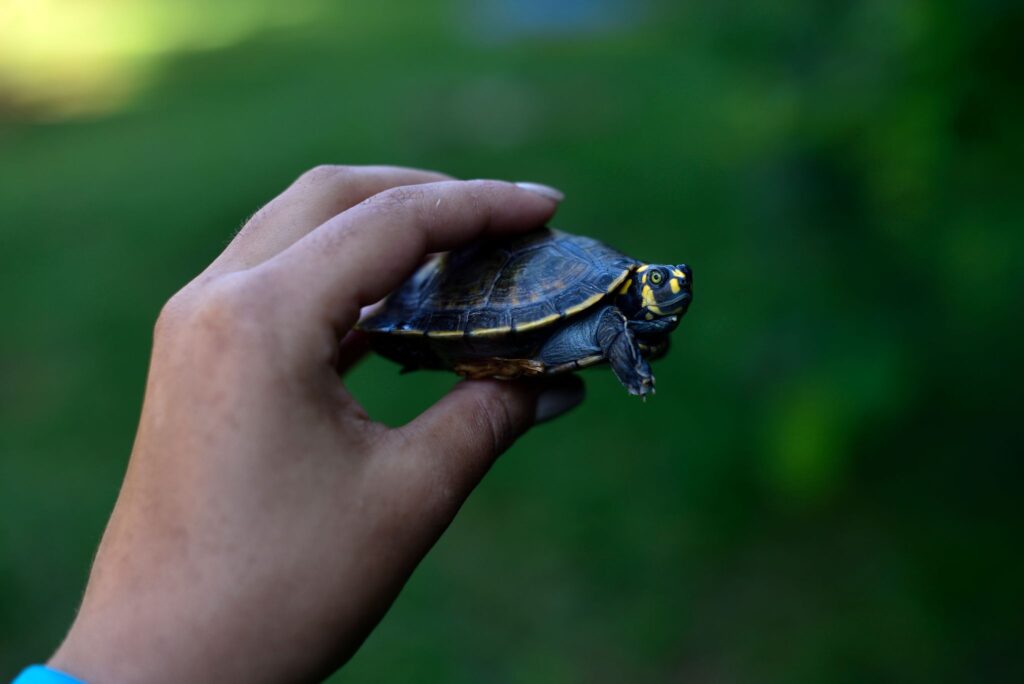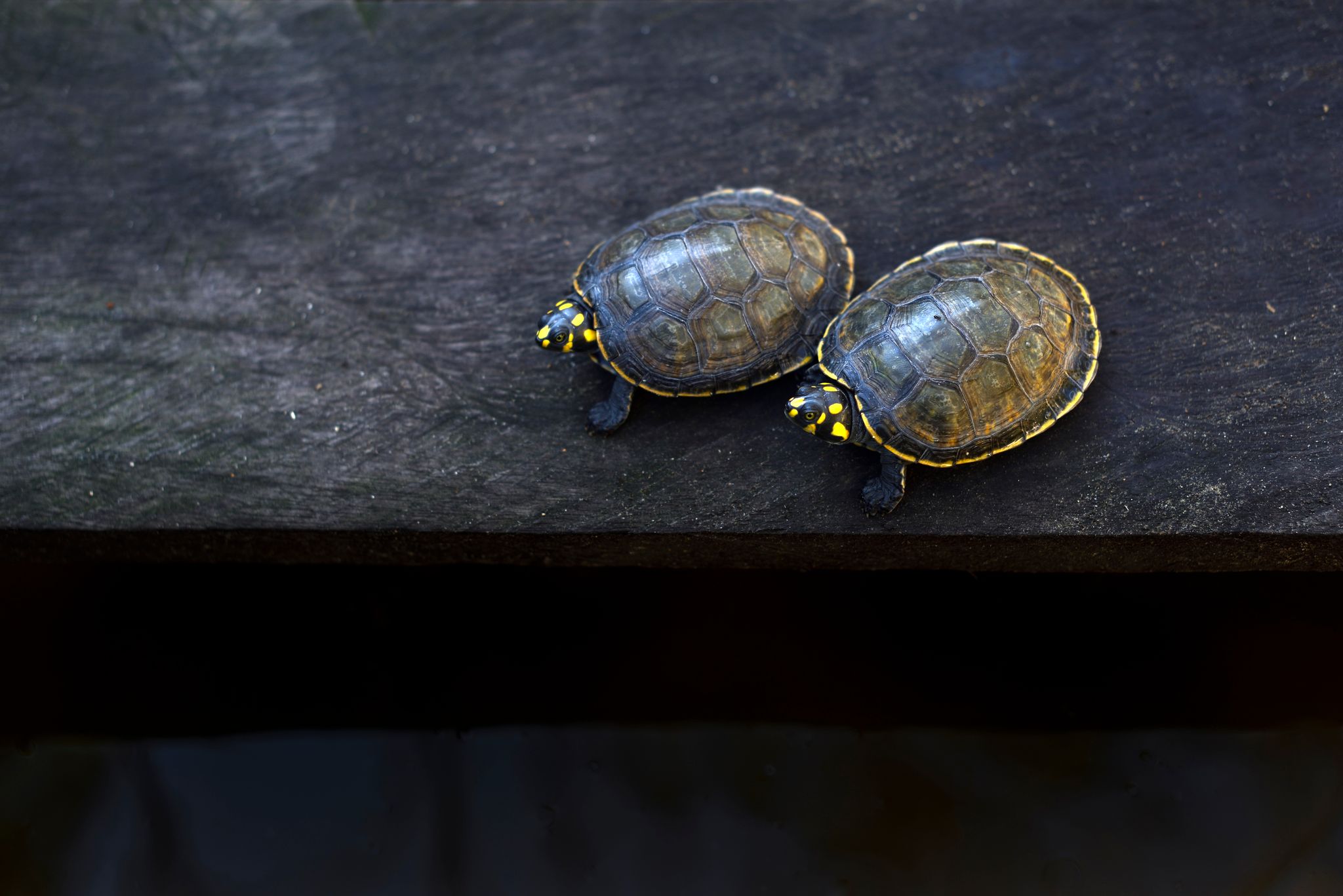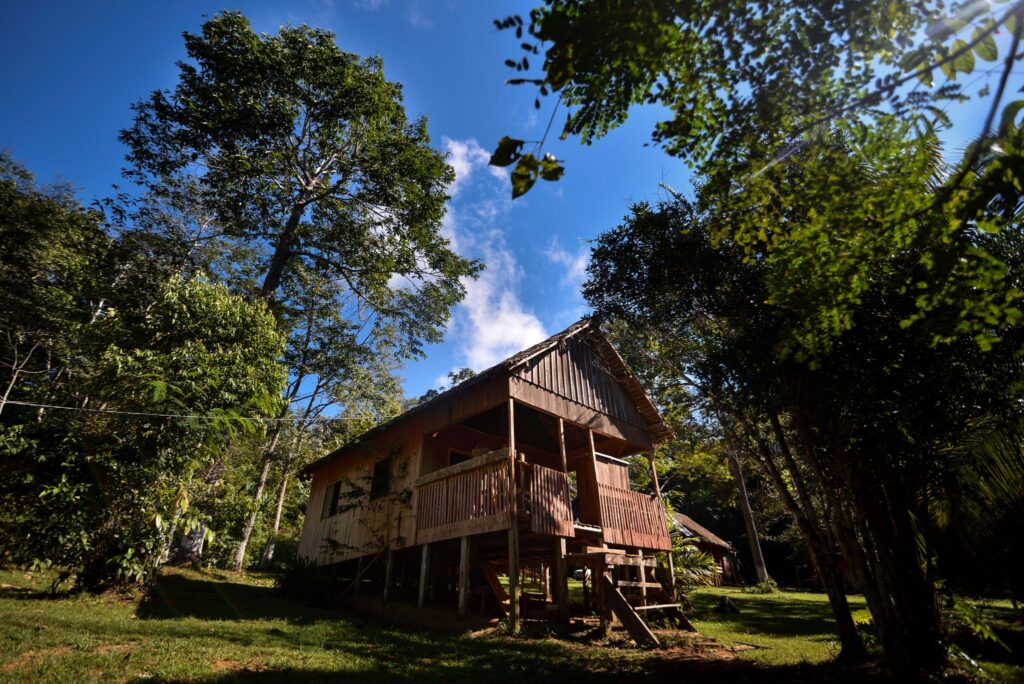Traditionally, local communities surrounding Tahuamanu have consumed the eggs of Yellow-spotted river turtles (Podocnemis unifilis, commonly known as peta in Spanish) as an important protein source for their diet.
 However, with village expansion accelerating demand for these eggs as well as increasing river traffic damaging local basins, these turtles face increased pressures from loss of habitat and overharvesting. Plus, with the boom in globalization, the use of peta eggs has developed from a local tradition into a full-fledged illegal trade, as outsiders loot eggs on the beaches of local rivers to sell in large urban centers throughout Bolivia and across the border in Brazil and Peru. Because of these factors, the peta is now listed by the International Union for Conservation of Nature’s Red List of Threatened Species (IUCN’s Red List) as a vulnerable species, likely to become threatened unless reproduction of the species improves and its habitat is better protected.
However, with village expansion accelerating demand for these eggs as well as increasing river traffic damaging local basins, these turtles face increased pressures from loss of habitat and overharvesting. Plus, with the boom in globalization, the use of peta eggs has developed from a local tradition into a full-fledged illegal trade, as outsiders loot eggs on the beaches of local rivers to sell in large urban centers throughout Bolivia and across the border in Brazil and Peru. Because of these factors, the peta is now listed by the International Union for Conservation of Nature’s Red List of Threatened Species (IUCN’s Red List) as a vulnerable species, likely to become threatened unless reproduction of the species improves and its habitat is better protected.
The Amazonian University of Pando – with support from our local sister organization Conservación Amazónica – ACEAA, the municipal government, and even the local Army brigade – has been leading conservation activities and research at Tahuamanu Biological Station to improve the incubation of river turtle eggs and increase survival rates of young hatchlings by delaying their release into the wild, all in order to increase the species’ chances of survival.
Although some aspects of these conservation efforts were happening before, it was not strategic nor scientific. It did not follow systematic data collection and recording practices and procedures, and there was no follow-up conducted on the young turtles once they were released back in the wild.
We helped build the capacity of the local biological station staff to understand how to collect and register field data, and the safe collection of eggs in the field. This included using geo-referencing to track the locations of eggs and turtle releases, as well as best practices in caring and transporting these species. Strengthening the capacity of local experts not only helps ensure that future collections and hatchings are scientifically measurable in order to improve and measure impact, but also empowers local people to better manage and control the full process of conservation of these species.
We also assisted the university and local staff at the biological station in purchasing the needed scientific equipment and supplies to implement these efforts, as well as helped host a community event to train a local Army brigade to aid the collection of 1,800 eggs from 50 turtle nests.
These eggs were collected from different sections along the Tahuamanu river. Following collection they  are cared for by local staff at the station, hatching between 65-80 days after being laid. Once the eggs have hatched, the baby turtles are kept in conditioned water ponds to monitor their growth until they are large enough to be released into their natural habitat. Of this batch, 85% of the eggs were hatched.
are cared for by local staff at the station, hatching between 65-80 days after being laid. Once the eggs have hatched, the baby turtles are kept in conditioned water ponds to monitor their growth until they are large enough to be released into their natural habitat. Of this batch, 85% of the eggs were hatched.
We have already purchased the tagging equipment to “mark” these turtles so they can be monitored after their release, however, due to political unrest in Bolivia in late 2019 and the current COVID-19 global pandemic that has restricted mobility in the country, they have not yet been released back to the wild. They are, however, being fully cared for at the biological station and staff will release them once restrictions are lifted.
We still expect to carry out one more training event to teach staff and volunteers how to release the turtles and how to monitor the survival, dispersal, and growth of these turtles.
Special thanks to The Sheldon and Audrey Katz Foundation for their generous support that makes this project possible.


